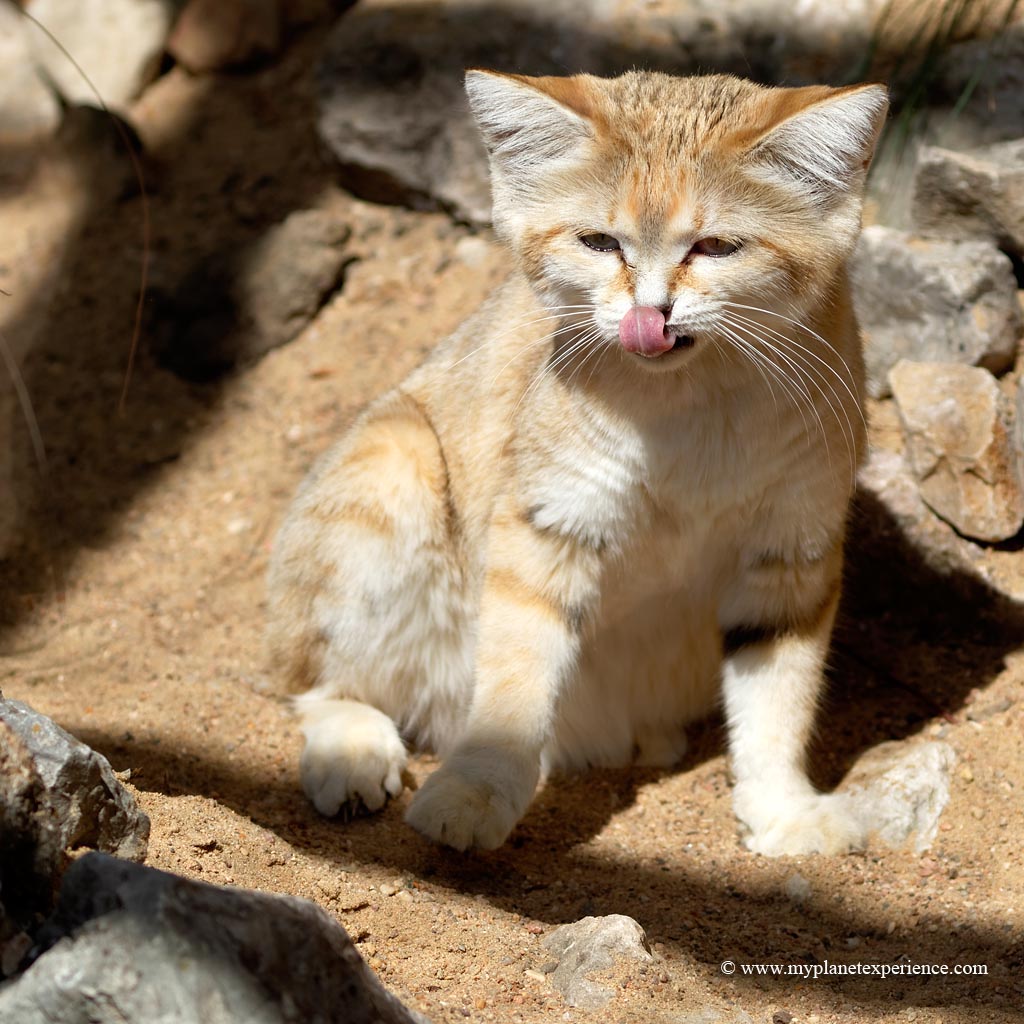Sand Cat Habitat And Food

Its 57 cm short ears are set low on the sides of the head aiding detection of prey moving underground.
Sand cat habitat and food. They are found in areas of sandy and stony desert. The sand cat is the only felid found primarily in true deserts. Sand cats live in temperatures that sometimes rise to more than 40C 104F.
The sand cat of North Africa and the Middle East survives in a land with very little water by hunting at night and sleeping and keeping cool during the day. The smallest cat species in Arabia the sand cat Felis margarita is well adapted to its arid desert habitat obtaining all the water it needs from its foodPrey capture is facilitated by the sand cats highly sensitive ears which are large and triangular and capable of detecting noises from animals both above and below the surface of the sand. Traps are set by people to kill foxes and wolves.
Sand cats live exclusively in desert regions. Sand Cats feed on rodents birds lizards and snakes and they are generally active throughout the night aided in hunting by their excellent night vision. But it also appears to be present in smaller populations in central and southwest Asia.
The rare vascular plants that characterise sandy habitats and which will come to benefit from the Sand Life measures include sea holly wild thyme dwarf everlast. Sand cats are mainly carnivorous and eat small mammals reptiles including venomous snakes birds insects and spiders. It mainly inhabits largely the deserts of northern Africa.
Wars and political strife harms the sand cat by harming its habitat. Vulnerable arid ecosystems are being rapidly degraded by human settlement and activity especially livestock grazing Allan and Warren 1993 Al-Sharhan et al. The Sand Cat Felis margarita Loche 1996 Communication Channels.
The cats large ears help to provide it with excellent hearing. They like to inhabit flat terrain and keep away from dunes which provide little food. Their home range may be to up to 16km2 62mi2.


















